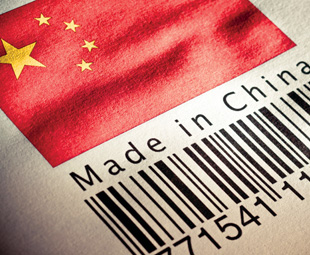Die groot gevaar

Most readers will know the meaning of my headline this month. For those of you who don’t, it means “imposing threat or menace”. To what am I referring? China. Wherever I travel across the globe, I find that companies are quivering at the mere mention of this country’s name.
I have been on three continents in the past three weeks. Not an entirely unusual situation for yours truly. However, the one thing that has struck me during my travels is the obsession with China. Maybe “obsession” isn’t the best word. Possibly “preoccupation” is better.
Wherever I go, whoever I speak to … captains of industry speak with one tongue when they reiterate their concerns about China. Over and over again.
My travels started with a jaunt to Germany (gosh that has a nice ring to it). The purpose of my visit was the 64th IAA Commercial Vehicles. You can read all about the exhibition in this issue of FOCUS – we have devoted a whopping 25 pages to this year’s event (which indicates the importance and prominence of this fair). And guess which country (apart from Germany, of course) had the greatest number of exhibitors? China, of course – clocking in at 147.
The fair had a distinctly international flavour to it. Given the downturn in the European economy, companies are now looking to so-called “growth markets” (which, incidentally, aren’t really growing … more about that later). As such, the exhibition organisers and the exhibitors did everything within their power to lure foreign visitors – and, it must be said, they did an exceptional job. More than a quarter (27 percent to be precise) of the professional visitors came from abroad. Guess which country was responsible for the most foreign visitors? You got it. China. Followed, incidentally, by the Netherlands and Sweden.
This all sounds like good news – so why the “groot gevaar”? Well, a number of the non-Chinese exhibitors expressed concern at the blatant rip-offs at the show. “It’s shocking,” one of the components suppliers elaborated. “We have a patent on a particular component, and a Chinese company appeared at the fair two years ago with a blatant copy of this product. We called our lawyers and they were frog-marched off the show. Now they’re back again!”
Yet another area of “groot gevaar” relates to the dwindling sales in China (remember my earlier comment about the so-called growth markets?). At the company’s media conference, Andreas Renschler, member of the Daimler AG Board of Management responsible for Daimler trucks and buses, pointed out that “medium and long-term outlook for the growth markets in the BRIC nations remains excellent”. However, he noted that truck sales had slowed in China, due to the fact that many customers chose to move their truck purchases forward because of a government incentive programme in 2010.
This is obviously of concern to companies wishing to sell to China. And who doesn’t? China built 6,2 million commercial vehicles in 2011, making it the world’s largest producer in this market segment – and a huge potential market! But more worrying is the fact that, if China’s domestic market dwindles, it will focus even more on export markets …
Its focus on export markets is already causing widespread panic. After my German jaunt I jetted off to Brazil, where I attended a safety exhibition (FOCUS has a sister magazine called SHEQ MANAGEMENT which focuses on safety, health, the environment and quality – if you share my fascination with these fields, an immediate subscription is called for!). While there, I met with 35 leading Brazilian companies within the field of safety. A total of 34 of those companies expressed a fear of Chinese competitors – because they (the Brazilians) simply cannot compete.
The Brazilian government has decided to protect local manufacturers of safety equipment, and has imposed a 70 percent duty on imported products. Despite this, the Chinese are still cheaper. I met with the biggest Brazilian manufacturer of safety gloves, which used to employ 400 people in its factory. “Thanks to the Chinese, we now employ only 200 people – we just cannot compete with their prices; they’re too low,” its MD berated. So 200 people lost their jobs – despite the hefty level of protection in that country.
Now I know what you’re thinking: it’s a case of sour grapes. We all need to step up to the mark, lift our game and compete with the Chinese – fair and square. The problem though is that the playing fields aren’t exactly level (thanks to government money, some Chinese companies don’t worry about things like a return on investment).
Back on South African soil, I attended General Motors’ launch of its fabulous new Trailblazer and got chatting to Ian Nicholls, the company’s vice president of planning. I was curious to get his thoughts on the subject; Nicholls is a highly astute businessman whose opinions I respect immensely. Was I perhaps exaggerating the issue? “Not a chance; the Chinese threat is one of the greatest risks industry is facing,” he responded.
Oh dear. It’s a seriously groot gevaar indeed.
Published by
Focus on Transport
focusmagsa




